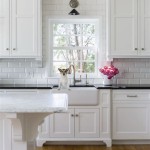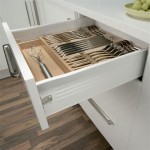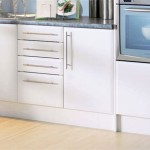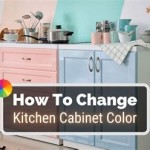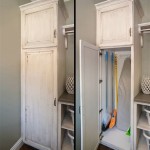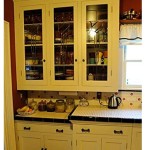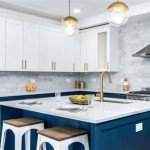Are Cream Cabinets Still In Style? A Timeless Exploration
Kitchen design trends are perpetually in flux, a dynamic interplay of evolving aesthetics, technological advancements, and shifting cultural preferences. Navigating this ever-changing landscape can be challenging, particularly when making significant investments like kitchen cabinetry. One enduring question that surfaces regularly is the relevance of cream-colored cabinets. Are they a classic choice that transcends fleeting trends, or have they been relegated to the annals of passé design?
The answer, as with many design-related inquiries, is nuanced. Cream cabinets, owing to their inherent versatility and adaptability, continue to hold a prominent position in kitchen design. However, their stylistic execution and integration within a broader design scheme are crucial determinants of their perceived modernity and aesthetic appeal. This article will delve into the enduring appeal of cream cabinets, exploring their advantages, potential drawbacks, and how to incorporate them effectively into contemporary kitchen designs.
The Enduring Appeal of Cream
Cream, as a color, possesses a unique ability to bridge the gap between stark white and warmer, more saturated hues. Its inherent softness and subtle warmth contribute to a kitchen environment that feels inviting, comfortable, and effortlessly elegant. This inherent quality makes cream a popular choice for homeowners seeking a space that is both functional and aesthetically pleasing.
One of the primary advantages of cream cabinets is their exceptional versatility. They serve as a neutral canvas, allowing for seamless integration with a wide range of countertop materials, backsplash designs, flooring options, and hardware finishes. Whether paired with classic granite countertops, contemporary quartz surfaces, or rustic butcher block, cream cabinets provide a harmonious backdrop that enhances the overall design aesthetic.
Furthermore, cream cabinets possess a remarkable ability to adapt to various architectural styles. They complement traditional kitchens with their classic charm, enhance the warmth of farmhouse-style designs, and add a touch of understated elegance to modern and transitional spaces. This adaptability makes them a safe and reliable choice for homeowners who value longevity and timelessness in their kitchen design.
Beyond their aesthetic appeal, cream cabinets also offer practical benefits. Their lighter tone reflects light effectively, contributing to a brighter and more spacious feel, particularly in kitchens with limited natural light. This can be especially beneficial in smaller kitchens or those with darker color palettes in other areas of the home.
Potential Drawbacks and Considerations
While cream cabinets offer numerous advantages, it is essential to acknowledge potential drawbacks and considerations before making a final decision. One common concern is the risk of yellowing over time. Certain cream shades, particularly those with stronger yellow undertones, may exhibit a more pronounced yellowing effect, especially when exposed to direct sunlight or harsh cleaning agents. Choosing a high-quality paint or finish that is specifically formulated to resist yellowing can mitigate this risk.
Another consideration is the potential for cream cabinets to appear dated if not incorporated thoughtfully into a comprehensive design scheme. Pairing cream cabinets with outdated hardware, overly ornate details, or a clashing color palette can detract from their inherent elegance and make the kitchen feel visually stale. Updating the hardware, streamlining the design elements, and introducing contemporary accents can effectively modernize the overall aesthetic.
Furthermore, the specific shade of cream chosen is crucial. There is a vast spectrum of cream hues, ranging from off-white shades with subtle undertones to richer, more saturated creams. Selecting a cream shade that complements the existing architectural style, lighting conditions, and personal preferences is essential for achieving a cohesive and visually appealing result.
Maintenance is also a factor to consider. While cream cabinets generally conceal dirt and fingerprints better than darker cabinets, they can still require regular cleaning to maintain their pristine appearance. Choosing a durable and easy-to-clean finish can simplify the maintenance process and ensure that the cabinets retain their beauty for years to come.
Incorporating Cream Cabinets into Contemporary Kitchen Designs
To successfully incorporate cream cabinets into contemporary kitchen designs, careful consideration must be given to the surrounding elements and overall design aesthetic. Here are several strategies for achieving a modern and stylish look:
1. Embrace Minimalism and Streamlined Design: Pair cream cabinets with clean lines, simple hardware, and minimal ornamentation. Opt for slab-front doors or shaker-style doors with a subtle profile. Avoid overly decorative moldings or intricate detailing that can appear dated. The focus should be on creating a sense of visual spaciousness and uncluttered elegance.
2. Introduce Contrasting Elements: Create visual interest by incorporating contrasting colors and materials. Pair cream cabinets with dark countertops, such as black granite or charcoal grey quartz. Use a bold backsplash tile to add a pop of color and personality. Introduce metallic accents through hardware, lighting fixtures, and appliances to create a sense of sophistication and modernity.
3. Update the Hardware: Hardware can significantly impact the overall style of cream cabinets. Opt for sleek and modern hardware finishes, such as brushed nickel, stainless steel, or matte black. Choose simple and understated designs that complement the minimalist aesthetic. Avoid overly ornate or traditional hardware styles that can detract from the contemporary feel.
4. Play with Textures: Introduce visual interest by incorporating a variety of textures into the kitchen design. Use natural stone countertops, textured backsplash tiles, or wood flooring to add depth and dimension. Contrast the smooth surfaces of the cabinets with the rough texture of brick or exposed wood beams to create a visually dynamic space.
5. Optimize Lighting: Proper lighting is essential for showcasing the beauty of cream cabinets. Use a combination of ambient, task, and accent lighting to create a well-lit and inviting space. Install under-cabinet lighting to illuminate countertops and highlight backsplash designs. Use pendant lights or recessed lighting to create a focal point and add visual interest.
6. Incorporate Natural Elements: Bring the outdoors in by incorporating natural elements into the kitchen design. Use potted plants, fresh flowers, or natural wood accents to add a touch of warmth and vitality. The earthy tones of natural elements complement the soft hue of cream cabinets, creating a harmonious and inviting atmosphere.
7. Choose the Right Cream Shade: Select a cream shade that complements the overall color palette and the existing architectural style. Consider the lighting conditions in the kitchen and choose a cream shade that will appear warm and inviting without being overly yellow. Experiment with different shades of cream to find the perfect hue for your space. Off-white creams with gray or beige undertones are often a good choice for contemporary designs.
8. Integrate Smart Technology: Incorporate smart appliances, touchless faucets, and automated lighting systems to enhance the functionality and modernity of the kitchen. These technological upgrades can seamlessly integrate with cream cabinets, adding a touch of sophistication and convenience to the space. A modern range hood over a cooktop can also enhance the overall aesthetic of a kitchen with cream cabinets.
9. Consider Open Shelving: Replace some of the upper cabinets with open shelving to create a more open and airy feel. Style the shelves with decorative accessories, cookbooks, and plants to add personality and visual interest. Open shelving can also provide an opportunity to showcase beautiful dishes and glassware, adding a touch of elegance to the kitchen design.
10. Focus on Functionality: While aesthetics are important, functionality should always be a primary consideration in kitchen design. Ensure that the layout is efficient and that the cabinets provide ample storage space. Incorporate pull-out shelves, drawer organizers, and other storage solutions to maximize the usability of the kitchen.
In conclusion, cream cabinets remain a viable and stylish option for kitchen design. Their versatility, adaptability, and inherent warmth contribute to their enduring appeal. However, successful integration requires careful consideration of design elements, hardware choices, and the overall aesthetic. By embracing contemporary design principles and incorporating modern accents, cream cabinets can create a kitchen that is both timeless and stylish.

What To Do When You Secretly Love Cream Kitchen Cabinets Heather Hungeling Design

What To Do When You Secretly Love Cream Kitchen Cabinets Heather Hungeling Design
:max_bytes(150000):strip_icc()/1.TheRealShakerKitchen-deVOL_LOW-RES11-18261654f63e48b9bb900fb0b95f8992.jpeg?strip=all)
20 Cream Kitchen Cabinets That Feel Fresh And New

What To Do When You Secretly Love Cream Kitchen Cabinets Heather Hungeling Design

13 Best Kitchen Ideas With Cream Cabinets For A Timeless Look Bay Llc

Cream Kitchen Cabinets Timeless Elegance

What To Do When You Secretly Love Cream Kitchen Cabinets Heather Hungeling Design

Cream Kitchen Cabinets Timeless Elegance June 2025

Modern Beige Cream Kitchen Cabinets A 2024 Trend Decorcabinets Com

Cream Kitchen Cabinets Timeless Elegance June 2025
Related Posts

